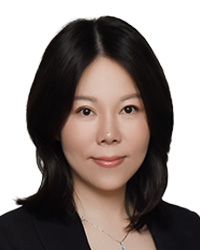The Stock Exchange of Hong Kong (SEHK) has instituted reforms since 2018 to attract more diversified listing applicants, especially those from new-economy industries. It has formulated specific listing regimes for:
- Companies with weighted voting right (WVR) structures;
- Biotech companies; and
- Specialist technology companies (STCs).
SEHK main board listing applicants are generally required to satisfy eligibility tests: profit; market capitalisation/revenue/cash flow; or market capitalisation/revenue.
Since the reforms, the SEHK has begun to accept biotech and specialist technology listings that do not satisfy the eligibility tests, and to allow companies with WVR structures to list.
WVR structures

Partner
Han Kun Law Offices
Tel: +852 2820 5668
E-mail:
tao.li@hankunlaw.com
A lot of companies from the innovative industries rely heavily on their founders’ technical expertise, knowledge and foresight. These companies may establish WVR structures, enhancing the voting power of key individuals to avoid diluting their shareholdings as a result of financing.
To attract such companies, the SEHK has permitted the listing of those with WVR structures since April 2018, but has stressed that non-WVR structures should be the norm.
It has formulated additional requirements and restrictions to protect investors of companies with WVR structures, including:
- Market capitalisation shall be at least HKD40 billion (USD5.1 billion) at the time of listing, or, if the revenue for the most recent financial year is not less than HKD1 billion, market capitalisation shall be at least HKD10 billion;
- Meaningful third-party investment from sophisticated investors;
- Demonstrating that the applicant is an innovative company, and the contribution of the WVR beneficiaries to the ongoing growth of the business; and
- The voting power of the WVR shares shall not exceed 10 times the voting power of ordinary shares.
Biotech companies
The biotech industry generally involves extensive R&D, which often needs financing before generating revenue.
Additionally, if biotech companies are subject to regulation by internationally recognised bodies like the US Food and Drug Administration (FDA), the National Medical Products Administration (NMPA) and the European Medicines Agency (EMA), there will be external benchmarks for the development progress of their products. This allows investors to understand the companies’ nature and assess the development stage of their products.
In April 2018, the SEHK added chapter 18A to its listing rules (Rules Governing the Listing of Securities on the Stock Exchange of Hong Kong Limited) to permit the listing of biotech companies that have not passed any eligibility tests. However, applicants must satisfy other requirements, such as:
- Having a market capitalisation of at least HKD1.5 billion at the time of listing;
- Having received meaningful third-party investment from sophisticated investors at least six months before listing;
- Having at least one core product beyond the concept stage; and
- Having sufficient working capital to cover at least 125% of the applicant’s required costs for 12 months from the date of publication of the listing document.
Specialist technology companies
A lot of STCs have relatively high market capitalisation but fail to satisfy eligibility tests on revenue or profit, since they are still engaged in R&D to commercialise their products or services, or because of their business nature.
In March 2023, the SEHK added chapter 18C to the listing rules for these companies. This regime is applicable to companies in sectors like next-generation information technology, advanced hardware and software, advanced materials, new energy and environmental protection, and new food and agriculture technologies, as well as companies that have high growth potential and satisfy other qualifications.
As some companies are still at the stage of primarily engaging in R&D and may face the risks of failing to commercialise or operational failure due to insufficient funds, this regime classifies STCs into two categories: commercial companies with revenue of at least HKD250 million in the most recent financial year; and pre-commercial companies that have yet to reach such a threshold. The latter are subject to additional requirements.
The specialist technology regime has no profit threshold, but requires that:
- A commercial company’s market capitalisation must be at least HKD6 billion at the time of listing, while a pre-commercial company’s must be at least HKD10 billion; and
- A commercial company’s expenditure on R&D must amount to at least 15% of its total operating expenditure; for a pre-commercial company, depending on its revenue, such R&D expenditure should amount to at most 50%.
Furthermore, as most STCs are not regulated by any competent authority, listing applicants must have received meaningful investment from two to five pathfinder sophisticated independent investors 12 months prior to the listing application, representing more stringent requirements on the number of such investors and period of their investment.
These investors are subject to either a six-month (commercial companies) or a 12-month (pre-commercial companies) lock-up period for the securities they own before the listing, to demonstrate their confidence in the applicants’ post-listing prospects.
With respect to sophisticated investors, the SEHK will consider their investment experience, industrial knowledge and expertise, which is similar to the regimes for companies with WVR structures and biotech companies.
However, the background requirements of sophisticated investors under this regime are more stringent than those under the other two regimes. Generally, these investors can be asset management firms managing assets worth at least HKD15 billion, companies or funds with investments of at least HKD5 billion primarily in specialist technology, or key industry participants.
Meanwhile, sophisticated investors of biotech companies can generally be managing assets of at least HKD1 billion or major pharmaceutical companies.
The above-mentioned reforms demonstrate that SEHK is meeting the competitive demands of the market while protecting investors. Since 2018, we have witnessed the successful listing of numerous innovative and biotech companies in Hong Kong, reflecting its appeal as a listing venue.
With the reforms relating to STCs, it is anticipated that more companies from innovative industries will be listed on the SEHK.
Li Tao is an partner at Han Kun Law Offices. She can be contacted at +852 2820 5668 or by e-mail at tao.li@hankunlaw.com





















